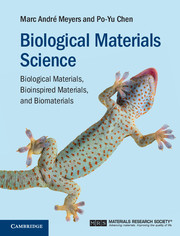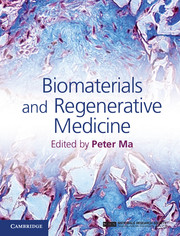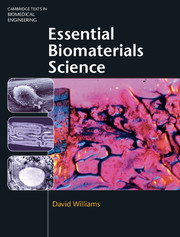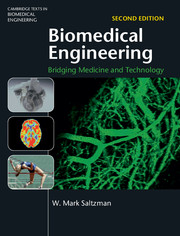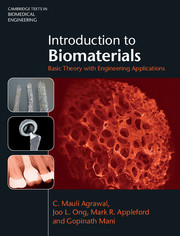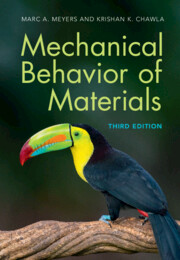Biological Materials Science
Taking a unique materials science approach, this text introduces students to the basic concepts and applications of materials and biomedical engineering and prepares them for the challenges of the new interdisciplinary field of biomaterials science. Split into three sections - Basic Biology Principles, Biological Materials, and Bioinspired Materials and Biomimetics - it presents biological materials along with the structural and functional classification of biopolymers, bioelastomers, foams, and ceramic composites. More traditional biomimetic designs such as Velcro are then discussed in conjunction with new developments that mimic the structure of biological materials at the molecular level, mixing nanoscale with biomolecular designs. Bioinspired design of materials and structures is also covered. Focused presentations of biomaterials are presented throughout the text in succinct boxes, emphasising biomedical applications, whilst the basic principles of biology are explained, so no prior knowledge is required. The topics are supported by approximately 500 illustrations, solved problems, and end-of-chapter exercises.
- Materials science based approach, combining biological principles with structure-property relationships
- Covers biological materials and bioinspired materials
- Solved examples, end-of-chapter problems, solutions manual and PowerPoint slides
Reviews & endorsements
'The union of the physical and biological sciences is in many respects one of the most exciting yet challenging aspects of scientific endeavor today. Nowhere is this more in evidence than in the area of biological materials science and engineering where many materials scientists struggle with the complex puzzle of biological form and function while biologists in turn have to deal with the invariably highly quantitative nature of the physical sciences and engineering. With this book, Meyers and Chen have delivered a true tour de force which takes the reader in clear and precise text from cells to virus-produced Li-ion batteries. This book is a must read for undergraduates, graduates and researchers alike in the rapidly expanding fields of biological, bioinspired and biomaterials science.' Robert Ritchie, Lawrence Berkeley National Laboratory
Product details
July 2014Hardback
9781107010451
644 pages
253 × 195 × 34 mm
1.54kg
472 b/w illus. 10 tables 150 exercises
Temporarily unavailable - available from TBC
Table of Contents
- 1. Evolution of materials science and engineering: from natural to bioinspired materials
- Part I. Basic Biology Principles:
- 2. Self assembly, hierarchy, and evolution
- 3. Basic building blocks
- 4. Cells
- 5. Biomineralization
- Part II. Biological Materials:
- 6. Silicate and calcium carbonate-based composites
- 7. Calcium phosphate-based composites
- 8. Biological polymers and polymer composites
- 9. Biological elastomers
- 10. Biological foams (porous solids)
- 11. Functional biological materials
- Part III. Bioinspired Materials and Biomimetics:
- 12. Bioinspired materials
- 13. Molecular-based biomimetics.

